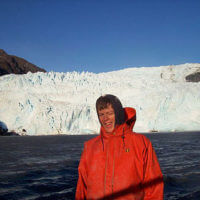Motivated primarily as part of a habitat-based stock assessment, we explored the feasibility of modeling yelloweye rockfish (Sebastes ruberrimus) habitat in Southcentral Alaska using high- resolution multibeam bathymetry. A generalized linear model was developed with bathymetrically derived terrain metrics (rugosity, slope, bathymetric position index, and distance-to-rock) as predictor variables. The model was parameterized and validated using remotely operated vehicle observations. When evaluated for the Chiswell Island training area, the model correctly classified 96.0% (n = 100) of a reserved set of presence/absence validation points (Cohen’s Kappa = 0.92; AUC = 0.98). When evaluated for the independent Nuka Island testing area, the overall accuracy was 82.5% (n=332; Kappa = 0.65; AUC = 0.95). This study demonstrates that suitable yelloweye habitat can be modeled with reasonable accuracy using high-resolution multibeam bathymetry, and such a model is fairly portable among sites along the Kenai Peninsula’s outer coast.
Current Status: GIS Analyst for Alaska Department of Fish and Game (Homer, Alaska)
Funding for this work was provided by the Pollock Conservation Cooperative via the Alaska Education Tax Credit Program.

